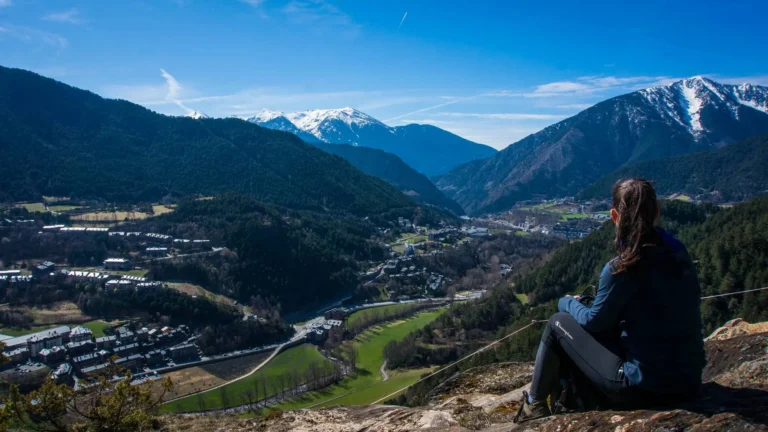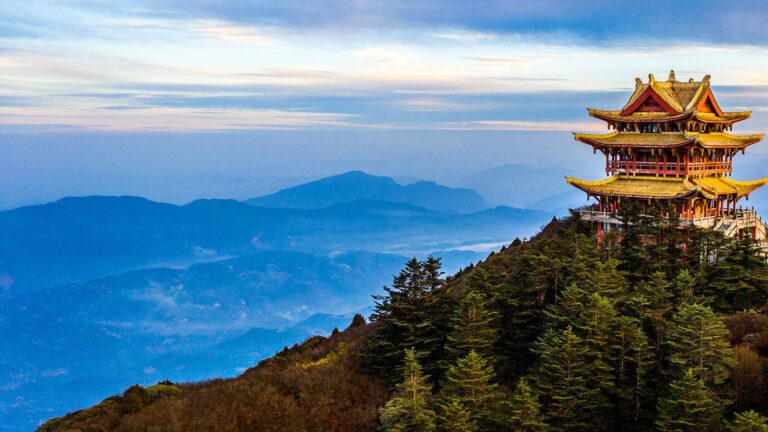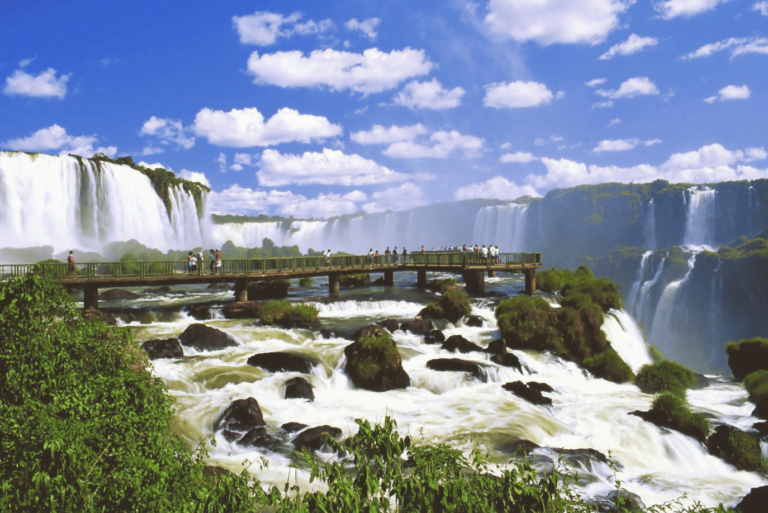59 Things to Know Before Traveling to India:
Our 59 Most Important Things To Know Before You Travel To India:
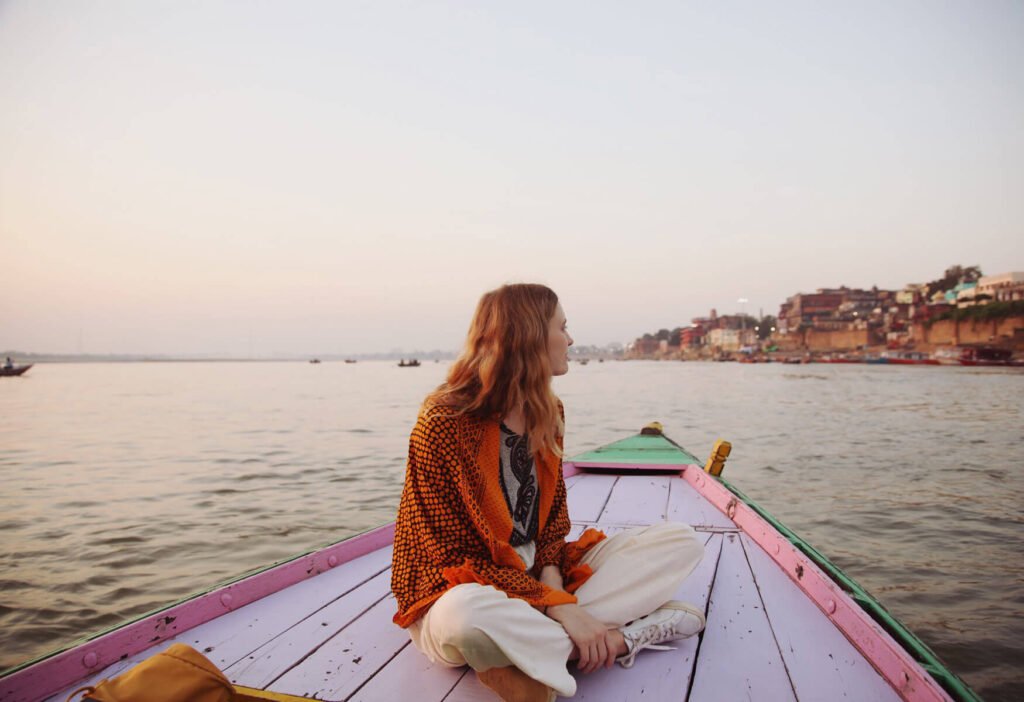
Welcome to India, a land of vibrant colors, rich history, diverse cultures, and captivating landscapes. As you prepare for your journey to this enchanting country, it’s essential to equip yourself with the knowledge that will ensure a smooth and enjoyable experience.
In this comprehensive guide, we present you with 59 important things to know before traveling to India. From visa requirements and currency matters to health precautions, cultural awareness, and safety tips, we have compiled a wealth of information to make your trip both unforgettable and hassle-free.
Whether you are an adventurous backpacker, a curious solo traveler, or a family seeking to explore India’s wonders, this guide will provide you with the insights you need to navigate the complexities and embrace the beauty of this captivating nation.
59 detailed important things to know before you travel to India:
1. Visa Requirements and Documents:
Check the visa requirements for your nationality and apply well in advance. Keep scanned copies of important documents like passport, visa, and travel insurance in a secure cloud storage for easy access.
| Physical Visa | E-Visa | |
|---|---|---|
| Cost | US$47 | US$25 |
| Processing Time | 3-5 days | 24 hours |
| Entries | Multiple | Double |
| Valid for | 6 months | 2 months |
- Types of Visas: India offers various types of visas, including tourist, business, student, and medical visas. Ensure you apply for the appropriate visa based on the purpose of your visit.
- E-Visa Facility: India provides an e-visa facility for citizens of many countries. It allows for a more convenient and faster online visa application process. Check if your country is eligible for e-visa and apply on the official Indian government website.
- Validity and Duration: Check the validity and duration of the visa before applying. Tourist visas typically have a validity of 3 months to 1 year, with a maximum stay of 90 days per visit.
- Processing Time: The processing time for obtaining a visa can vary based on your nationality and the type of visa. It’s advisable to apply for the visa well in advance of your travel dates.
- Visa Extension: If you wish to extend your stay in India, you can apply for a visa extension at the Foreigners Regional Registration Office (FRRO) or Foreigners Registration Office (FRO) in major cities.
- Documents Required: Prepare the necessary documents for your visa application, which usually include a valid passport with at least six months’ validity, a recent passport-sized photograph, a completed visa application form, and proof of sufficient funds for your stay in India.
- Invitation Letter (if applicable): If you’re visiting India for business or family reasons, you may need an invitation letter from your Indian host or company. The letter should state the purpose, duration, and details of your visit.
- Travel Itinerary: Submit a detailed travel itinerary with flight bookings, hotel reservations, and planned activities during your stay in India.
- Bank Statements: Provide recent bank statements to demonstrate your financial ability to cover expenses during your stay.
- Travel Insurance: While not mandatory, having travel insurance that covers medical emergencies and trip cancellations is highly recommended.
- Medical Requirements: Some travelers may need to provide a certificate of yellow fever vaccination, depending on their travel history.
- Consulate Interview (if required): In certain cases, applicants may be required to attend an interview at the Indian consulate or embassy.
Always double-check the latest visa requirements and procedures with the official Indian government websites or Indian diplomatic missions in your country before applying. Properly fulfilling visa requirements will ensure a smooth and hassle-free entry to India, allowing you to make the most of your journey in this incredible country.

2. Currency and Money Matters:
The official currency is the Indian Rupee (INR). Exchange currency at reputable banks or authorized exchange centers. Carry both cash and cards as some places may not accept cards, especially in remote areas.
- Currency: The symbol for the Indian Rupee is ₹.
- Denominations: The Indian Rupee is available in various denominations, including coins (₹1, ₹2, ₹5, ₹10) and banknotes (₹10, ₹20, ₹50, ₹100, ₹200, ₹500, ₹2000).
- Currency Exchange: Foreign currencies can be exchanged at airports, banks, authorized money changers, and some hotels. It’s advisable to exchange money at authorized outlets to get a fair rate.
- ATMs: ATMs are widely available in cities and towns across India. They accept international debit and credit cards, providing a convenient way to withdraw cash in Indian Rupees.
- Cash vs. Cards: While urban areas accept credit and debit cards at most establishments, rural areas and smaller shops may prefer cash. Carry some cash for places where cards may not be accepted.
- International Transaction Fees: Check with your bank about international transaction fees for using cards in India. Inform your bank about your travel dates to avoid any issues with card usage.
- Currency Declaration Form: If you are carrying more than USD 5,000 or its equivalent in cash, you need to declare it on a Currency Declaration Form upon arrival in India.
- Tipping: Tipping is customary in India, especially at restaurants, hotels, and for services like guides and drivers. While it’s not mandatory, leaving a gratuity is appreciated.
- Bargaining: Bargaining is common in local markets and smaller shops. Feel free to negotiate the price for goods and services, but do so respectfully.
- Carrying Smaller Denominations: Keep smaller denominations handy for smaller purchases, as change for larger notes may not always be readily available.
- Safety: Be cautious with your money and avoid displaying large amounts of cash in public. Use hotel safes or secure pouches to store valuables during your travels.
- Lost or Stolen Cards: In case your credit or debit card is lost or stolen, report it to your bank immediately to prevent unauthorized transactions.
- Traveler’s Cheques: Traveler’s cheques are not widely accepted in India, and it may be challenging to find places to cash them.
- Online Payments: Major cities offer a variety of digital payment options like Paytm, Google Pay, and PhonePe. Familiarize yourself with these apps for hassle-free transactions.
Understanding the currency and money matters in India will help you manage your finances efficiently during your trip. Carry a mix of cash and cards, use reputable currency exchange services, and stay informed about any local financial regulations for a seamless travel experience in the country.

3. Health Precautions:
Consult your doctor for necessary health advice before traveling to India. Carry a basic first aid kit, insect repellent, and any necessary medications. Drink bottled water and avoid consuming uncooked or undercooked food.
- Vaccinations: Before traveling to India, ensure you are up-to-date with routine vaccinations. Consider additional vaccinations, such as Hepatitis A, Typhoid, and Tetanus, as recommended by your healthcare provider.
- Yellow Fever Certificate: If you are traveling from or transiting through a yellow fever-endemic country, you may need a yellow fever vaccination certificate for entry into India. Check the latest requirements from the official Indian government websites or Indian diplomatic missions.
- Water and Beverages: Drink bottled or boiled water, and avoid consuming tap water, ice cubes, and unpasteurized dairy products to prevent waterborne diseases.
- Food Safety: Enjoy street food but choose vendors with proper hygiene practices. Opt for freshly cooked and hot meals to reduce the risk of foodborne illnesses.
- Hand Hygiene: Wash your hands frequently with soap and water, especially before eating and after using the restroom.
- Mosquito Protection: India is home to mosquitoes that can transmit diseases like malaria, dengue, and chikungunya. Use mosquito repellent, wear long-sleeved clothing, and sleep under mosquito nets, especially in high-risk areas.
- Sun Protection: India can have intense sunlight. Wear sunscreen, a hat, and sunglasses to protect yourself from the strong UV rays.
- Air Pollution: Major cities in India often experience high air pollution levels. If you have respiratory issues, consider wearing a mask in crowded and polluted areas.
- Medications: Carry essential medications and a first-aid kit for minor illnesses and injuries. Consult your doctor before travel to ensure you have an adequate supply of prescription medications.
- Medical Insurance: Get comprehensive travel medical insurance that covers medical emergencies, hospitalization, and medical evacuation to your home country if necessary.
- Healthcare Facilities: In urban areas, you’ll find modern healthcare facilities. However, medical services may be limited in rural regions. Research hospitals and clinics in your travel destinations in advance.
- Altitude Sickness: If you plan to visit high-altitude regions like Ladakh, be aware of altitude sickness. Take time to acclimatize, stay hydrated, and avoid heavy physical activity initially.
- Heat and Humidity: India can have extreme heat and humidity, especially during the summer. Stay hydrated, wear light and breathable clothing, and avoid outdoor activities during the hottest hours of the day.
- COVID-19: Stay updated on India’s COVID-19 guidelines, mask requirements, and vaccination regulations.

4. Climate and Weather:
India experiences diverse climate patterns due to its vast size and geographical diversity. The country can be broadly categorized into four major seasons:
- Winter (December to February): Winter in most parts of India is relatively mild, with cool temperatures in the northern regions and pleasant weather in the southern and coastal areas. In the northern states like Delhi and Rajasthan, temperatures can drop significantly, and warm clothing is necessary. Coastal regions like Goa and Kerala have milder winters with temperatures ranging from pleasant to slightly warm.
- Summer (March to June): Summer in India is characterized by hot and dry weather in most parts of the country. Temperatures can soar, especially in the northern plains, with regions like Rajasthan and Delhi experiencing extreme heat. Coastal areas and hill stations offer relief from the heat, making them popular summer getaways.
- Monsoon (June to September): The monsoon season brings heavy rainfall to most parts of India. The southwest monsoon brings much-needed relief from the summer heat but can also lead to flooding and disruption of travel plans in some regions. Coastal regions like Kerala and Goa experience a longer monsoon season, while the northern states have shorter spells of rain.
- Post-Monsoon (October to November): After the monsoon retreats, India experiences a post-monsoon season characterized by clear skies and pleasant weather. The temperatures gradually cool down, and this period is considered one of the best times to visit India, especially for outdoor activities and cultural festivals.
Keep in mind the regional variations in climate when planning your trip to India. Here are some additional tips related to weather:
- Rain Gear: If traveling during the monsoon season, pack waterproof clothing, umbrellas, and waterproof bags to protect your belongings.
- Sun Protection: Sunscreen, hats, and sunglasses are essential during the hot summer months to protect yourself from the intense sunlight.
- Layered Clothing: Due to the diverse climate, it’s advisable to pack a mix of light and warm clothing to accommodate temperature variations during your travels.
- Seasonal Festivals: Consider planning your trip around India’s colorful festivals, as they often coincide with specific seasons and showcase the country’s vibrant culture.
- Check Regional Weather: India’s weather can vary significantly between different regions. Before traveling, check the weather forecast for your specific destination to be better prepared.
By understanding India’s climate and weather patterns, you can plan your trip accordingly and make the most of your travel experience in this diverse and enchanting country.
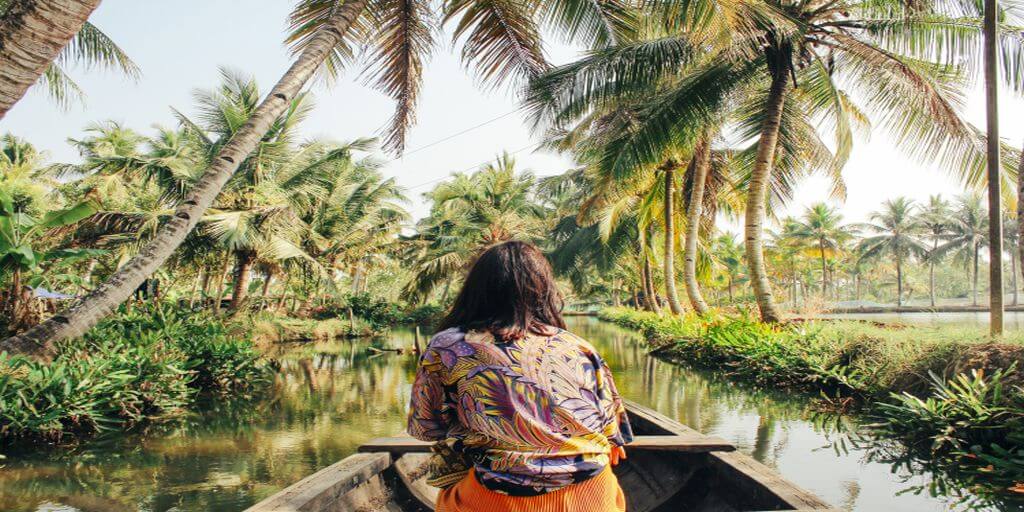
5. Travel Insurance:
Purchase comprehensive travel insurance to cover medical emergencies, trip cancellations, and loss of belongings.
- Comprehensive Coverage: Opt for a comprehensive travel insurance policy that covers medical emergencies, trip cancellations, baggage loss, and personal liability.
- Medical Expenses: Ensure your insurance covers medical expenses, hospitalization, and emergency medical evacuation in case of illnesses or accidents during your trip.
- Pre-existing Conditions: Declare any pre-existing medical conditions while purchasing travel insurance to ensure appropriate coverage.
- Trip Cancellation and Interruption: Be covered for trip cancellations or interruptions due to unforeseen circumstances like illness, natural disasters, or flight cancellations.
- Lost or Delayed Baggage: Insure your belongings against loss, theft, or delayed baggage to be reimbursed for essential items in case of mishaps.
- Emergency Evacuation and Repatriation: Ensure your policy includes provisions for emergency evacuation and repatriation to your home country in critical situations.
- Adventure Activities: If you plan to indulge in adventure sports or activities, check if your insurance covers such activities to avoid additional risks.
- Coverage Duration: Choose a policy that covers the entire duration of your trip, including any potential extensions.
- Claims Procedure: Familiarize yourself with the claims procedure and keep all relevant documents handy to facilitate smooth claims processing.
- Travel Insurance Providers: Compare policies from reputable travel insurance providers in India to find the most suitable one for your needs.
- Exclusions: Be aware of policy exclusions, such as coverage for pre-existing conditions, specific high-risk activities, or regions with travel advisories.
- Family Coverage: If traveling with family or in a group, consider a family or group travel insurance policy for cost-effective coverage.
- Emergency Contact: Carry a copy of your travel insurance policy and emergency contact details with you at all times during your trip.
- Validity for Multiple Trips: If you plan to visit India more than once in a year, explore multi-trip insurance options to save on costs.
- Read Reviews: Check online reviews and customer feedback to gauge the efficiency and reliability of the insurance provider.
- Consult an Expert: If uncertain about coverage or policy details, consult with a travel insurance expert or an insurance agent for guidance.
Having comprehensive travel insurance provides peace of mind and financial protection during your journey in India. Accidents and unforeseen events can happen at any time, so invest in a reliable insurance policy to ensure a hassle-free and secure travel experience.

6. Cultural Awareness:
India is a land of rich cultural heritage, traditions, and customs. Being culturally aware will enhance your travel experience and help you respect the local way of life. Here are some key aspects of cultural awareness in India:
- Greeting Etiquette: The traditional Indian greeting is “Namaste,” wherein palms are pressed together with a slight bow. This gesture is a sign of respect and acknowledgment. Use “Namaste” to greet locals, especially in rural areas.
- Dress Modestly: India is relatively conservative in its attire. Dress modestly, especially when visiting religious places and rural areas. Women are encouraged to wear clothing that covers their shoulders and knees.
- Shoes and Feet: Remove your shoes before entering temples, mosques, and some homes. It’s customary to leave them outside as a sign of cleanliness and respect.
- Personal Space: India is densely populated, and personal space might differ from what you are accustomed to. Be patient and respectful in crowded areas and public transportation.
- Public Display of Affection: Public displays of affection, such as kissing and hugging, are generally not considered appropriate in Indian culture. Show affection with discretion.
- Public Display of Anger: Avoid public displays of anger or frustration as it may not be well-received culturally.
- Cultural Sensitivity: India is a diverse country with various religions and languages. Show sensitivity towards different beliefs and avoid discussions that could be deemed controversial.
- Photography Etiquette: Always ask for permission before taking photos of people, especially in rural areas. Some religious places and monuments may have photography restrictions, so inquire beforehand.
- Eating with Hands: In some regions, it’s customary to eat with your hands. If you prefer using utensils, it’s generally accepted as well.
- Left Hand Usage: In Indian culture, the left hand is considered unclean. Avoid using your left hand for handshakes, giving or receiving items, or touching others.
- Religious Sites: When visiting temples, mosques, or gurdwaras, follow the specific rules and dress codes. Cover your head and remove shoes when required.
- Bargaining: Haggling is common in markets, but do so with respect and politeness. Bargain with a smile, and remember that fair prices benefit both you and the seller.
- Tolerance for Noise and Chaos: India can be bustling, loud, and chaotic. Embrace the energy of the country and stay patient in crowded places.
- Understanding Caste System: While the caste system still exists, it’s not a topic often discussed with tourists. Be mindful of its sensitivity and avoid any questions related to caste.
By being culturally aware, you’ll create positive interactions with locals, experience the true essence of Indian hospitality, and leave a respectful impact during your travel in this culturally diverse nation. Embrace the beauty of India’s traditions, festivals, and customs, and your journey will be filled with meaningful connections and unforgettable experiences.
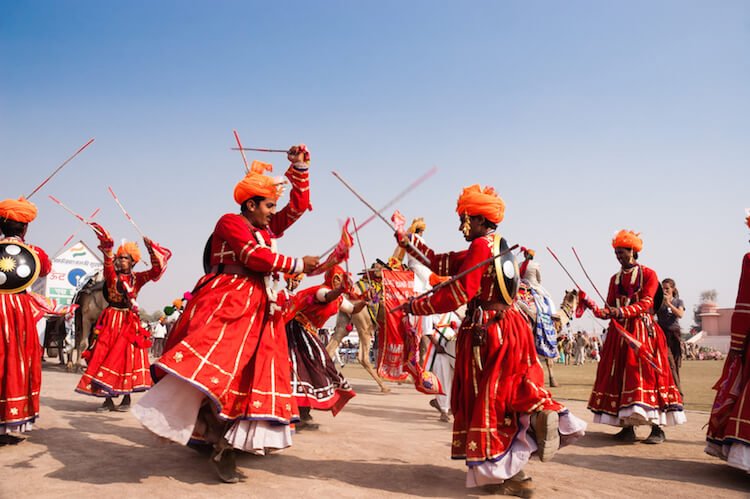
7. Language:
English is widely spoken, especially in tourist areas, but learning basic phrases in Hindi or the local language can enhance communication with locals.
Languages in India:
- Multilingual Country: India is a multilingual nation with a rich linguistic diversity, recognizing 22 officially recognized languages by the Constitution.
- Hindi: Hindi is the most widely spoken language in India and serves as the official language at the national level.
- English: English is also extensively used for official, administrative, and business purposes. Many educated Indians can communicate in English.
- State Languages: Each state and union territory in India has its own official language, and the state government conducts business in its respective language.
- Regional Languages: In addition to state languages, there are numerous regional languages spoken by various communities and ethnic groups.
- Major Regional Languages: Some major regional languages include Bengali, Tamil, Telugu, Marathi, Gujarati, Kannada, Malayalam, Odia, Punjabi, and Assamese.
- Script Diversity: Indian languages use various scripts, including Devanagari (Hindi, Marathi), Bengali (Bengali), Tamil (Tamil), Telugu (Telugu), Kannada (Kannada), and more.
- Language Influence: The linguistic landscape varies as you travel across regions, with language influencing culture, traditions, and cuisine.
- Language Barrier: In areas with limited English speakers, language barriers may arise, making it helpful to learn some basic phrases of the local language.
- Urban Centers: Major cities and tourist destinations often have people proficient in multiple languages, including English, making communication easier.
- Language of Religion: Some Indian languages, like Sanskrit, Pali, and Arabic, hold religious significance and are used for sacred texts and rituals.
- Preservation Efforts: The Indian government takes measures to preserve and promote endangered languages, encouraging linguistic diversity.
- Language Schools and Courses: Language schools and institutes offer opportunities for foreigners to learn Indian languages and immerse in local culture.
- Signage and Communication: In most urban areas, public signs, menus, and essential information are usually provided in English and the local language.
- Language Learning Apps: Use language learning apps to familiarize yourself with common phrases and improve communication during your travels.
Respecting and embracing India’s linguistic diversity can enhance your travel experience, foster connections with locals, and provide insights into the country’s rich cultural heritage.
| HINDI | TAMIL | |
|---|---|---|
| Hello | Namaste | Vanakkam |
| Thank You | Dhan yavaad | Nandri |
| Water | Paani | Tannir |
| Awesome/Unbelievable | Ajooba | arpudham |
| Joking | Mazaak | Nagaichchuvai |

8. Cash and ATMs:
Carry sufficient cash, especially in rural areas. Use ATMs at reputable banks to withdraw money. Inform your bank about your travel dates to avoid card issues.
- Currency Notes: The official currency of India is the Indian Rupee (INR). Currency notes come in denominations of ₹10, ₹20, ₹50, ₹100, ₹200, ₹500, and ₹2000. Carry a mix of smaller and larger denominations to make transactions more convenient.
- Cash vs. Cards: While major cities and tourist destinations in India widely accept credit and debit cards, it’s still advisable to carry cash, especially when visiting rural areas or smaller establishments where card acceptance might be limited.
- ATMs Availability: ATMs are readily available in urban areas and popular tourist destinations. You’ll find them at airports, shopping malls, markets, and near tourist attractions. However, in remote or rural regions, ATM availability may be scarce.
- International Cards: International credit and debit cards are generally accepted at ATMs in India. Look for ATMs with the logos of major card networks such as Visa, MasterCard, Maestro, and Cirrus.
- ATM Fees: Be aware of potential ATM fees, especially if you are using international cards. Your bank and the Indian bank may charge fees for foreign transactions, so it’s advisable to withdraw larger amounts to minimize fees.
- Daily Withdrawal Limits: ATMs in India usually have daily withdrawal limits. Check with your bank to ensure your withdrawal limit aligns with your travel needs.
- Safety at ATMs: Use ATMs located inside banks or in well-lit and busy areas to minimize the risk of theft or fraud. Be cautious of anyone trying to assist you at the ATM, and shield your PIN while entering it.
- Rupee Symbol: The symbol for the Indian Rupee is ₹. Ensure you’re familiar with it to avoid confusion with other currencies.
- Currency Exchange: If you need to exchange foreign currency to Indian Rupees, use authorized money changers or banks. Avoid exchanging money with street touts to prevent counterfeit currency scams.
- Tipping in Cash: Tipping is common in India for services like restaurants, drivers, guides, and hotel staff. It’s customary to tip in cash, so keep small denominations handy for gratuities.
- Currency Declaration Form: If you are carrying more than USD 5,000 or its equivalent in cash, you’ll need to declare it on a Currency Declaration Form upon arrival in India.
- Digital Payments: In recent years, India has seen a surge in digital payment options. Major cities offer various mobile payment apps like Paytm, Google Pay, and PhonePe, which are widely used for various transactions.
Having a good balance of cash and using ATMs strategically will ensure a smooth financial experience during your trip to India. Plan ahead, monitor your expenses, and make safe and informed choices while handling money to fully enjoy your journey in this diverse and enchanting country.
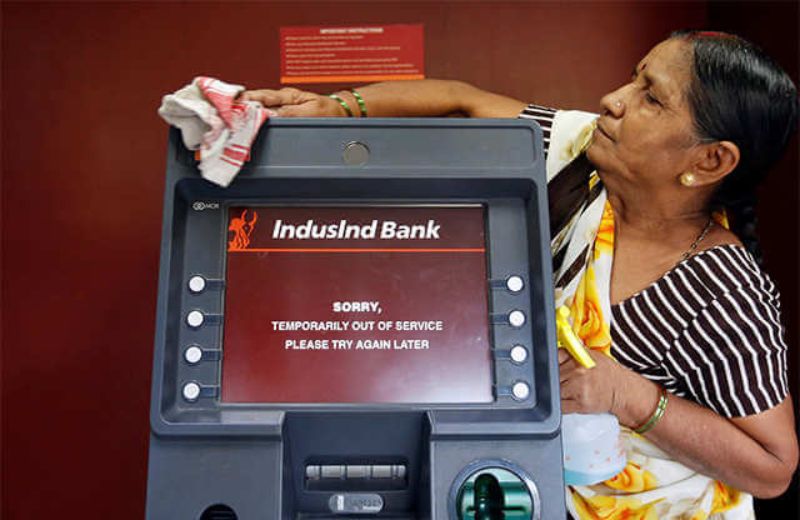
9. Local Food and Water:
Try local cuisine but be cautious with street food. Wash fruits and vegetables thoroughly or opt for peeled options. Drink bottled water and use it to refill your reusable water bottle.
- Culinary Diversity: India’s culinary landscape is incredibly diverse, with each region offering its own distinct flavors and specialties. From aromatic biryanis in Hyderabad to spicy curries in Kerala and delicious street food in Delhi, India’s food scene is a feast for the senses.
- Street Food Delights: Trying local street food is a must for any food enthusiast. Sample popular street snacks like chaat (savory and tangy snacks), samosas (fried pastry filled with spiced potatoes), vada pav (spicy potato fritters in a bun), and golgappa (crisp hollow puris filled with spicy water).
- Vegetarian Cuisine: India is known for its rich vegetarian tradition. Even non-vegetarians will be delighted by the variety and flavor of vegetable-based dishes like paneer (Indian cottage cheese), aloo gobi (potato and cauliflower curry), and dal (lentil soup).
- Spices and Flavors: Indian cuisine is renowned for its bold use of spices. Each dish is a symphony of flavors, featuring spices like cumin, coriander, turmeric, cardamom, and more. Embrace the explosion of tastes on your palate!
- Hygiene Considerations: While street food is tempting, choose vendors with good hygiene practices and high customer turnover. Look for busy stalls where the food is cooked fresh.
- Drinking Water: Stick to bottled water or filtered water to avoid waterborne illnesses. Most hotels and restaurants provide safe drinking water, but always double-check before consuming tap water.
- Bottled Water: Buy bottled water from reputable brands and ensure the seal is intact. Avoid buying water bottles from street vendors, as they may be refilled with tap water.
- Water Purification: To reduce plastic waste, consider carrying a reusable water bottle with a built-in purifier or water purifying tablets to treat tap water.
- Beverages: Savor traditional Indian beverages like masala chai (spiced tea), lassi (yogurt-based drink), and fresh fruit juices. Beware of ice in drinks, especially from street vendors, to avoid contamination.
- Dietary Restrictions: India is generally accommodating to dietary restrictions, including vegetarian, vegan, and halal options. Inform your server about any specific dietary requirements.
- Regional Delicacies: Each state in India boasts unique dishes. Don’t miss out on trying regional delicacies like dosas in South India, rogan josh in Kashmir, and Bengali sweets in West Bengal.
- Eat with Your Hands: In some regions and local eateries, eating with your hands is customary. It is believed to improve the taste and connection with the food.
- Restaurants vs. Street Food: While street food offers an authentic experience, if you prefer a more controlled environment, dine at established restaurants and hotels known for their culinary expertise.

10. Transportation:
India has an extensive transportation network. Plan your train and bus journeys in advance. Consider domestic flights for long distances. Use reputable transportation services and registered taxis.
- Trains: Indian Railways is one of the largest rail networks in the world. Trains connect almost every corner of the country, making it an essential and affordable mode of transportation for both locals and tourists. From luxurious luxury trains to budget-friendly options, you can choose the type of train that suits your needs and comfort.
- Buses: Bus services, both government-run and private, are widely available and connect cities, towns, and even remote villages. Sleeper buses are popular for long-distance travel, offering overnight journeys with comfortable berths.
- Metro Systems: Major cities like Delhi, Mumbai, Kolkata, Bengaluru, and Chennai have well-developed metro systems. Metros provide a convenient and efficient way to navigate within the city and avoid traffic congestion.
- Flights: India has several domestic airlines offering flights between major cities and tourist destinations. Domestic flights can save time and are ideal for covering long distances quickly.
- Auto-rickshaws and Cycle-rickshaws: Auto-rickshaws and cycle-rickshaws are popular modes of transportation for short distances within cities and towns. Negotiate the fare before boarding an auto-rickshaw, as they usually don’t have meters.
- Taxis and Cabs: App-based ride-hailing services like Ola and Uber operate in major cities, providing convenient and comfortable rides. Traditional taxis are also available, but ensure they use a meter or agree on the fare beforehand.
- Local Buses: Within cities and towns, local buses provide a cost-effective way to travel short distances. Buses can get crowded during peak hours, so be prepared for the rush.
- Ferries and Boats: In coastal regions and places with water bodies, ferries and boats offer unique transportation experiences. Explore the backwaters of Kerala or visit the Andaman and Nicobar Islands by ferry.
- Private Cars and Rentals: Renting a car with a driver or driving yourself is an option for more flexible and personalized travel. However, be aware that traffic in some cities can be chaotic, and driving might not be suitable for everyone.
- Cycle and Motorcycle Rentals: In tourist destinations, you can find rental services for bicycles and motorcycles. Cycling is a great way to explore smaller towns and rural areas at a leisurely pace.
- Shared Cabs: Shared cabs or “shared autos” are common in some cities. These vehicles follow fixed routes and pick up multiple passengers, making it an economical choice for short distances.
- Transportation Apps: Use ride-hailing apps like Uber and Ola for safer and more transparent transportation.
India’s transportation options are abundant, but travel conditions and experiences can vary significantly. Choose the mode of transportation that aligns with your preferences, budget, and itinerary to navigate this vast and fascinating country with ease.
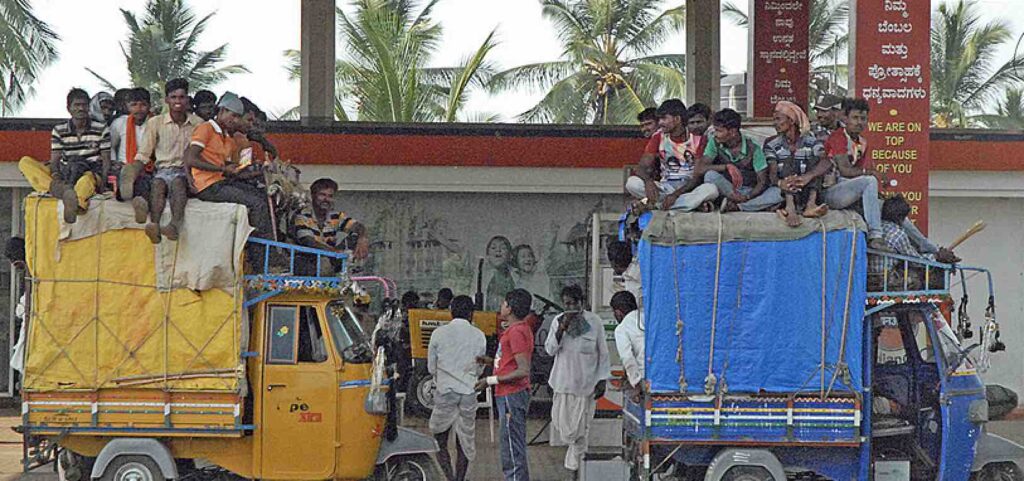
11. Flights and Airports:
Book your flights well in advance. Major international airports are in Delhi, Mumbai, and Bangalore, with domestic airports across the country.
Flights:
- Domestic Flights: India has a well-developed network of domestic airlines connecting major cities and tourist destinations.
- Popular Airlines: Major domestic airlines include IndiGo, SpiceJet, Air India, GoAir, Vistara, and AirAsia India.
- Booking Tickets: Book domestic flights in advance, especially during peak travel seasons, to secure better fares and seat availability.
- Online Booking: Many airlines offer online booking options, making it convenient to compare prices and choose preferred timings.
- Baggage Allowance: Check baggage allowances and restrictions for your chosen airline before packing to avoid extra charges at the airport.
- Web Check-In: Take advantage of web check-in services offered by airlines to save time at the airport.
- Flight Delays: Be prepared for possible flight delays, especially during monsoon season or adverse weather conditions.
- Airline Loyalty Programs: Join frequent flyer programs to earn points and avail benefits on future flights.
Airports:
- Major International Airports: India’s main international airports are located in Delhi, Mumbai, Bengaluru, Chennai, Hyderabad, and Kolkata.
- Customs and Immigration: Clear customs and immigration procedures upon arrival, and keep necessary documents and visa information handy.
- Terminal Facilities: International airports offer various facilities like duty-free shopping, currency exchange, restaurants, lounges, and Wi-Fi.
- Security Check: Be ready for security checks before entering airport terminals; keep laptops and liquids accessible for screening.
- Transit and Connecting Flights: Allow sufficient time for transit between connecting flights, especially if changing terminals.
- Transport to City: Prepaid taxis, app-based ride-hailing services, and airport buses are available for transport to the city center.
- Regional Airports: Smaller cities and tourist destinations have regional airports serving domestic flights.
- Domestic Terminals: Major cities have separate domestic terminals; confirm the terminal for your domestic flight.
By familiarizing yourself with flight booking procedures, airport facilities, and transit options, your air travel experience in India will be more comfortable and stress-free.

12. Safety and Security:
Be cautious with your belongings, especially in crowded places and public transport. Avoid isolated areas, particularly at night. Use reputable tour operators for excursions.
- Travel Insurance: Purchase comprehensive travel insurance that covers medical emergencies, trip cancellations, and personal belongings.
- Health Precautions: Take necessary vaccinations and carry a basic first-aid kit for minor health issues.
- Safe Drinking Water: Stick to bottled water or filtered water; avoid consuming tap water and ice from unknown sources.
- Food Hygiene: Eat at reputable restaurants and stalls with proper hygiene practices to avoid foodborne illnesses.
- Street Safety: Be cautious in crowded areas, and keep an eye on your belongings to prevent theft or pickpocketing.
- Public Transportation: Use authorized and reputable modes of transportation to ensure safety during travel.
- Scams and Touts: Be vigilant of scams and touts offering unrealistic deals or assistance; avoid sharing personal information with strangers.
- Demonstrations and Protests: Stay updated on local news to avoid areas with potential demonstrations or protests.
- Cultural Sensitivity: Respect local customs and traditions; dress modestly, especially in religious places.
- Emergency Numbers: Keep a list of emergency numbers, including local police, medical services, and your country’s embassy or consulate.
- Solo Travelers: Exercise caution and avoid traveling alone late at night; inform someone about your whereabouts.
- Women Travelers: Be cautious while traveling solo; prefer women-only accommodation options and use reputable transportation services.
- Natural Disasters: Stay informed about weather conditions and natural disaster warnings in your travel region.
- Traffic Safety: Be alert while crossing roads, as traffic can be chaotic in some cities.
- Alcohol Consumption: Drink responsibly and avoid excessive alcohol consumption in public places.
By staying aware of your surroundings and taking necessary precautions, you can ensure a safe and enjoyable travel experience in India. Always prioritize your well-being and make informed decisions during your journey.
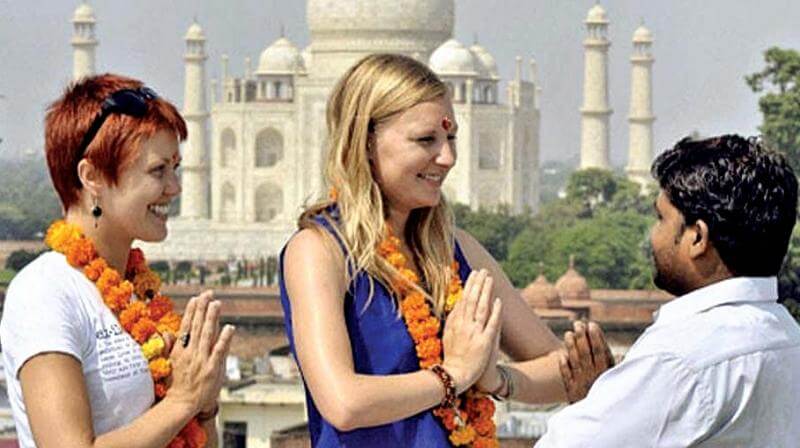
13. Have fun and EAT! Food Delivery Apps in India:
We’d prefer to see you eating out or taking advantage of the amazing street food, that said, using food delivery apps while traveling in India offers unparalleled convenience and ease.
Exploring a new country can be exhilarating, but it can also leave you tired and hungry. Food delivery apps provide a simple solution to satisfy your cravings without the hassle of searching for restaurants or deciphering unfamiliar menus.
With a vast selection of cuisines and restaurants at your fingertips, you can indulge in regional delicacies and international favorites right from your accommodation. These apps also ensure hygiene and safety standards, making them a reliable choice for travelers.
Whether you’re navigating busy cities or remote areas, food delivery apps make dining effortless, allowing you to focus on soaking in the rich culture and sights of India.
- Swiggy: One of the most popular food delivery platforms, offering a wide range of restaurants and cuisines to choose from.
- Zomato: Another widely used app, providing an extensive list of restaurants, menus, and user reviews for easy decision-making.
- Uber Eats (Now merged with Zomato): Previously operated independently, it’s now integrated with Zomato, offering a seamless food delivery experience.
- Foodpanda: An established food delivery service, offering a variety of dining options and frequent discounts.
- Dunzo: Beyond food delivery, Dunzo also delivers groceries, medicines, and other essentials.
- Amazon Food: Part of Amazon’s services, delivering food from select restaurants in specific cities.
- Swiggy Genie: A service within the Swiggy app for quick pick-up and delivery of packages, documents, and more.
- Box8: Specializes in delivering ready-to-eat meals, biryanis, wraps, and desserts with their in-house kitchen.
- Faasos: Known for its wraps, biryanis, and quick delivery of freshly prepared food.
- FreshMenu: Offers a daily changing menu with a focus on fresh and gourmet meals.
- EazyDiner: Not just a food delivery app, it also allows users to book restaurant reservations and avail dining offers.
- Scootsy: Provides premium food delivery service, catering to niche restaurants and upscale cuisine.
- Uber Eats (Now merged with Zomato): Previously operated independently, it’s now integrated with Zomato, offering a seamless food delivery experience.
- FoodCloud: Connects home chefs and professional cooks to deliver homemade meals.
- Licious: Specializes in delivering fresh and high-quality meat and seafood products.
- InnerChef: Offers ready-to-eat meals, cakes, desserts, and more, with a focus on healthy and gourmet options.
- Railrestro: Partners with Indian Railways to deliver restaurant-quality food during train journeys.
- Yumist: Provides freshly prepared meals and biryanis with quick delivery.
- Holachef: Delivers chef-prepared meals, Indian and international cuisines, and daily specials.
- McDelivery (McDonald’s): McDonald’s delivery service, available in major cities across India.
- Pizza Hut Delivery: Offers pizza delivery from Pizza Hut outlets in various cities.
- Domino’s Pizza Online Delivery: Domino’s pizza delivery service available across India.
These food delivery apps provide a convenient and diverse range of dining options, making it easy for travelers and locals alike to enjoy a wide variety of cuisines from the comfort of their homes or hotel rooms.

14. Voltage and Adapters:
India’s standard voltage is 230V. Bring universal adapters to charge your electronic devices.
- Voltage: Standard voltage in India is 230 volts, with a frequency of 50 hertz.
- Plug Types: India uses Type C (two round pins), Type D (three round pins in a triangular pattern), and Type M (three round pins in a larger triangular pattern) plugs.
- Adapters and Converters: Carry suitable adapters and voltage converters if your devices require different plug types or voltages.
- Universal Adapters: Consider using a universal travel adapter to accommodate various plug types worldwide.
- Voltage Compatibility: Check your electronic devices for voltage compatibility; most modern devices have built-in converters.
- Power Cuts and Fluctuations: Be prepared for power cuts and fluctuations in some areas; carry a power bank for backup.
- Charging Locations: Hotels and accommodations usually have charging points, but budget options may lack universal sockets.
- Surge Protectors: Use surge protectors to safeguard devices from power surges and fluctuations.
- Charging Overnight: Charge devices at reputable charging points in your accommodation, especially overnight.
- Airports and Travel Hubs: Charging stations with multiple plug types are available at major airports and travel hubs.
- Adapters for Purchase: Buy plug adapters and voltage converters at airports, electronic stores, and travel accessory shops.
By following these guidelines, you can ensure that your devices stay charged and operational during your travels in India.

15. Monuments and UNESCO Sites:
India boasts numerous UNESCO World Heritage Sites, including the Taj Mahal, Qutub Minar, and more. Research and prioritize visiting these cultural and historical treasures.
- Taj Mahal: Agra’s iconic white marble mausoleum, renowned for its architectural beauty and symbolizing eternal love.
- Red Fort: Located in Delhi, this impressive fortress showcases Mughal architecture and historical significance.
- Qutub Minar: A UNESCO site in Delhi, this minaret is the tallest brick minaret in the world.
- Fatehpur Sikri: A historical city near Agra, known for its well-preserved Mughal architecture and grand monuments.
- Humayun’s Tomb: A magnificent tomb in Delhi, considered a precursor to the Taj Mahal’s architectural style.
- Ajanta and Ellora Caves: UNESCO sites in Maharashtra, featuring ancient rock-cut caves with exquisite Buddhist art.
- Konark Sun Temple: A UNESCO site in Odisha, known for its impressive Sun Temple, dedicated to the Hindu Sun God.
- Khajuraho Group of Monuments: In Madhya Pradesh, known for their intricately carved erotic sculptures on Hindu temples.
- Agra Fort: Another impressive fort in Agra, housing palaces, mosques, and courtyards.
- Hampi: A vast UNESCO site in Karnataka, showcasing the ruins of the Vijayanagara Empire with intricate temples and structures.
- Mahabodhi Temple Complex: Located in Bodh Gaya, Bihar, a revered site for Buddhists marking Buddha’s enlightenment.
- Sundarbans National Park: A UNESCO site in West Bengal, the largest mangrove forest in the world, home to the Royal Bengal Tiger.
- Great Living Chola Temples: A group of temples in Tamil Nadu, including Brihadeeswarar Temple, showcasing ancient Dravidian architecture.
- Ellora Caves: An archaeological site in Maharashtra, featuring Buddhist, Hindu, and Jain cave temples.
- Chhatrapati Shivaji Terminus (CST): A UNESCO-listed railway station in Mumbai, representing Victorian-Gothic architecture.
- Rani Ki Vav: An intricately designed stepwell in Gujarat, showcasing impressive art and carvings.
Note: India has several UNESCO World Heritage Sites, and this list represents only a selection of the most famous and significant ones. Each of these sites offers a unique glimpse into India’s rich history, culture, and architectural brilliance. When visiting these monuments and UNESCO sites, show respect for their cultural and historical value.

16. Unmissable Sites:
Don’t miss iconic attractions like the Jaipur palaces, Varanasi’s Ghats, Kerala’s backwaters, and the scenic beauty of Ladakh.


17. Illegal Substances:
India has strict laws regarding illegal substances. Avoid any involvement with illegal drugs to ensure a trouble-free trip.
- Strict Drug Laws: India has stringent drug laws, and possession, consumption, or trafficking of illegal substances is a serious offense.
- Zero Tolerance: India has a zero-tolerance policy towards illegal drugs, and penalties for drug-related offenses can be severe, including long prison sentences and heavy fines.
- Common Illegal Substances: Drugs like marijuana, cocaine, heroin, ecstasy, and other synthetic drugs are illegal in India.
- Prescription Medications: Some prescription medications, especially those containing opioids or psychotropic substances, are also regulated. Carry a doctor’s prescription for such medications.
- Medical Marijuana: Despite some states legalizing medical marijuana, its possession and use remain illegal at the federal level. Medical cannabis use requires special permission from the government.
- Avoid Suspicious Offers: Refrain from accepting any offers of illegal substances from strangers, as this could be a setup for police entrapment.
- Airport and Customs: Drug trafficking is a grave offense, and airport security and customs officials are vigilant in detecting and apprehending offenders.
- Stay Away from Illegal Activities: Avoid any involvement or association with illegal activities related to drugs, as this could lead to serious legal consequences.
- Report Suspicious Activity: If you come across any suspicious drug-related activity, report it to local authorities immediately.
- Medical Emergencies: In case of accidental drug exposure or medical emergencies related to substance abuse, seek immediate medical assistance without fear of legal consequences.
- Safe and Responsible Travel: Enjoy your trip to India responsibly, and abide by the country’s laws and regulations. Focus on exploring the rich culture, history, and natural beauty of the country instead.
Remember, violating drug laws can ruin your travel experience and lead to severe legal repercussions. It’s essential to respect the laws of the country you are visiting and make responsible choices during your time in India.
18. Wildlife Sanctuaries and National Parks:
Respect wildlife sanctuaries and follow guidelines to protect the ecosystem and wildlife.
19. Festivals and Cultural Events:
Check the local calendar for festivals and cultural events to experience India’s vibrant celebrations. Witness colorful celebrations like Diwali, Holi, and more. Immerse yourself in the country’s rich cultural heritage
20. Street Vendors:
Try street food from reputable vendors, but ensure it is freshly cooked and served hot to avoid foodborne illnesses.
21. Public Restrooms/Toilets:
Public restrooms may not meet Western standards. Carry tissues and hand sanitizer.
22. Time Zone:
India has multiple time zones, but the majority follow Indian Standard Time (IST), which is UTC+5:30.
23. Etiquette at Religious Sites:
Dress modestly and cover your head when required while visiting temples and mosques.
24. Music and Dance:
Enjoy traditional music and dance performances for a glimpse into India’s cultural heritage.
25. Traffic Rules:
Be patient with traffic congestion and respect local traffic rules.
26. Smoking Regulations:
Smoking in public places is banned in many cities and states.
27. SIM Cards and Mobile Connectivity:
Purchase a local SIM card with data for internet access and staying connected.
- Prepaid vs. Postpaid: In India, you can choose between prepaid and postpaid SIM cards. Prepaid SIM cards are more commonly used by tourists as they offer flexibility in usage and expenditure control.
- Documents Required: To purchase a SIM card, you’ll need a photocopy of your passport, visa, and a passport-sized photograph. Some vendors may also require a local address proof, which can be provided by your hotel.
- Mobile Operators: India has several mobile operators like Airtel, Vodafone Idea (Vi), Jio, and BSNL. Airtel and Vi have a larger coverage area, especially in remote regions.
- SIM Card Purchase: You can easily buy a SIM card at the airport, local shops, or official stores of mobile operators. Choose a reputable vendor to avoid potential issues.
- Activation Process: After purchasing the SIM card, it may take a few hours to a day for the card to be activated. Follow the instructions provided by the vendor to complete the activation process.
- Recharge Options: Recharge your SIM card with top-up vouchers available at stores, or use online apps and websites for quick recharges.
- Internet Data Plans: Mobile operators offer various data plans suitable for tourists, including daily, weekly, and monthly options. Choose a plan that meets your data requirements.
- Internet Speed: In major cities and tourist destinations, you can expect decent 4G speeds. However, in rural or remote areas, the internet speed may be slower.
- Wi-Fi Availability: Most hotels, restaurants, and cafes in tourist areas offer free Wi-Fi. However, it’s always useful to have a mobile data connection for emergencies and areas with no Wi-Fi coverage.
- International Roaming: If you plan to use your home country’s SIM card in India, check with your mobile operator for international roaming packages. It may be more cost-effective to get a local SIM card for extended stays.
- Mobile Payment Apps: India has a widespread digital payment system. You can use mobile payment apps like Paytm, Google Pay, and PhonePe for various transactions, including bill payments, shopping, and more.
Having a local SIM card with internet access will enhance your travel experience in India, enabling you to stay connected, navigate easily, and access essential information on the go. Activation of a local SIM card might take some time, so do it as soon as possible.
28. Art and Crafts:
India is renowned for its handicrafts and art. Purchase souvenirs directly from artisans to support local communities.
29. Traffic Signals and Road Signs:
Be cautious of traffic signals and road signs, as adherence to traffic rules can be inconsistent.
30. Personal Safety:
Be cautious when traveling alone, especially at night. Stay in well-lit and busy areas. Keep emergency numbers and your accommodation address handy.
31. Street Dogs:
Street dogs are common in many areas. Avoid approaching them to prevent potential incidents.
32. Petty Theft:
Watch out for pickpockets in crowded areas and public transport. Keep your belongings secure.
33. Local Newspapers and News Channels:
Read local newspapers or watch news channels to stay informed about current events.
34. Photocopies of Documents:
Carry photocopies of important documents separately from the originals.
35. Business Hours:
Some businesses may close for afternoon siesta, especially in smaller towns.
36. Shop Hours During Festivals:
Shops may close earlier during festivals, so plan your shopping accordingly.
37. Plan for Delays:
Be flexible with your schedule, as unexpected delays are common in India.
38. Challenging Destinations:
Research challenging destinations like Ladakh for altitude sickness and plan accordingly.
39. Environmental Awareness:
Respect nature and avoid littering to preserve India’s beautiful landscapes.
40. Etiquette at Religious Sites:
Dress modestly and cover your head when required while visiting temples and mosques.
41. Street Navigation:
Streets may not have consistent signage. Use landmarks for navigation.
42. Local Snacks and Beverages:
Try local snacks and beverages for an authentic culinary experience.
43. Personal Comfort:
Carry comfortable shoes for long walks and explorations.
44. Volunteering and Charity:
Choose reputable organizations for volunteering or charity work.
45. Photography Restrictions:
Some religious places and monuments may have photography restrictions; always ask for permission before taking photos.
46. Photography and Privacy:
Respect privacy and avoid taking pictures of people without permission.permission before taking photos.
47. Photography at Airports:
Photography is restricted at airports; refrain from taking pictures of airport facilities or personnel.
48. Photography and Drones:
Avoid using drones without proper permits. Ask for permission before taking photos of people.
49. Noise and Crowds:
Be prepared for noise and crowds, especially in popular tourist spots.
50. Respect for Elders:
Show respect to elders using polite language and gestures.
51. Train Stations:
Arrive at train stations well in advance, as they can be busy and crowded.
52. Traveling in Sleeper Trains:
Lock your luggage and secure belongings while traveling in sleeper trains.
53. Train Platforms:
Train platforms can get crowded. Exercise caution while boarding or alighting.
54. Night Travel:
Avoid traveling at night, especially in remote areas, for safety reasons.
55. Solo Female Travelers:
Female travelers may attract attention. Dress modestly and assertively decline unwanted advances. Prepare to be stared at: Probably the first thing you’ll notice when you leave the airport. It might feel a little violating at first but it helps to be more accepting that it isn’t meant as an insult but a show of curiosity.
56. Internet Access:
Wi-Fi is widely available in hotels and restaurants, but consider getting a local SIM card for reliable internet access during your travels.
57. Weather and Monsoon Season:
Be aware of the monsoon season (June to September) as it can affect travel plans, especially in flood-prone areas.
58. River Crossings:
Be cautious when crossing rivers during monsoon, as water levels can rise suddenly.
59. Embrace the Experience:
India can be chaotic, vibrant, and enchanting. Embrace the diverse experiences and immerse yourself in the country’s unique culture, history, and traditions.
With these detailed 59 Things to Know Before Traveling to India, you are now well-prepared to embark on a memorable journey through the enchanting land of India. Enjoy the rich cultural heritage, stunning landscapes, and warm hospitality that this incredible country has to offer!

Frequently Asked Questions (FAQ) – 59 Things to Know Before Traveling to India:
1. Do I need a visa to travel to India?
- Yes, most foreign nationals require a visa to enter India. Apply for the appropriate visa category well in advance through the Indian embassy or consulate in your home country.
2. What is the best time to visit India?
- India’s diverse geography means different regions have varied climates. Generally, the best time to visit is during the winter months (October to March) when the weather is pleasant in most parts of the country.
3. What languages are spoken in India?
- India is a multilingual country with Hindi and English serving as the official languages. Numerous regional languages are spoken across the states, such as Bengali, Tamil, Telugu, Marathi, Gujarati, Kannada, and more.
4. Is it safe to travel to India, especially for solo female travelers?
- India is generally safe for travelers, but it’s essential to exercise caution, especially as a solo female traveler. Follow basic safety tips, dress modestly, avoid isolated areas at night, and stay in reputable accommodations.
5. What currency is used in India, and can I use credit cards?
- The currency used in India is the Indian Rupee (INR). Credit cards are widely accepted in urban areas, but carry some cash for transactions in rural or remote regions.
6. How is the food in India?
- Indian cuisine is diverse, flavorful, and varies by region. Embrace the opportunity to try different dishes, but be cautious with street food and drink bottled or filtered water.
7. Are there any health precautions I should take?
- Check with your doctor for any required vaccinations before traveling to India. Carry a basic first-aid kit and practice food and water hygiene.
8. Can I use my mobile phone in India?
- Most international mobile phones work in India, but check with your service provider for roaming rates. Consider getting a local SIM card for cheaper rates and better connectivity.
9. What is the voltage in India, and what type of plug do they use?
- India’s standard voltage is 230 volts, and the plug types commonly used are Type C (two round pins), Type D (three round pins in a triangular pattern), and Type M (three round pins in a larger triangular pattern).
10. Is bargaining common in India?
- Bargaining is a common practice in markets and smaller shops in India. Negotiate politely to get a better deal, but be respectful of the seller.
11. Are there any cultural etiquettes I should be aware of?
- Dress modestly, remove shoes before entering temples and homes, use the right hand for eating and giving/receiving items, and respect local customs and traditions.
12. Can I drink alcohol in India?
- Yes, alcohol is available in most parts of India, but regulations and availability vary from state to state. Drinking in public places is generally not permitted.
13. Are there any specific customs while visiting religious places?
- Dress conservatively when visiting religious sites. Some temples may require covering the head or removing footwear before entry.
14. What are some must-visit attractions in India?
- India offers an array of attractions, including the Taj Mahal, Jaipur’s palaces, Kerala’s backwaters, Goa’s beaches, Varanasi’s ghats, and more.
15. How do I get around in India?
- India has a well-developed transportation system. Trains, buses, taxis, auto-rickshaws, and app-based ride-hailing services are common for travel within and between cities.
Before your trip, thoroughly research and plan your visit to make the most of your time in this culturally rich and diverse country.
59 Things to Know Before Traveling to India: Final Thoughts
As your journey through India comes to a close, we hope our 59 Things to Know Before Traveling to India has been instrumental in preparing you for an unforgettable adventure.
With its cultural richness, breathtaking landscapes, and warm hospitality, India has a way of leaving an indelible mark on the hearts of travelers. By being informed about important aspects such as visa requirements, local customs, health precautions, and safety measures, you’ve been empowered to make the most of your experience while respecting the country’s traditions and values.
As you traverse the bustling streets of Delhi, admire the grandeur of the Taj Mahal, immerse yourself in the serenity of Kerala’s backwaters, or find spiritual solace in Varanasi, remember to embrace the diversity and uniqueness of India with an open heart and an adventurous spirit. Cherish the memories, relish the flavors, and let India’s magic weave its spell on you. Bon voyage!

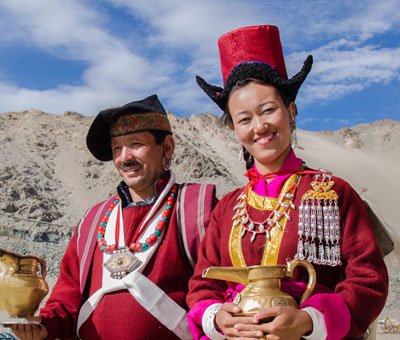
Ladakh: The Unforgettable Land
Welcome to the mesmerizing land of Ladakh, a remote region nestled in the northernmost part of India. Enveloped by the majestic Himalayas, it beckons adventurers with its surreal landscapes, rich cultural heritage, and spiritual charm..

Europe: A Tapestry of Diversity, Culture and Adventure
Europe, a continent as diverse as it is beautiful, is a traveler’s dream come true. From the snow-capped peaks of the Alps to the sun-kissed beaches of the Mediterranean, Europe offers an enchanting mix of experiences for every type of traveler. Join us as we embark on a journey through the heart of Europe, discovering…

Our Top 5 Best Places to Visit in Kuwait
Discovering Kuwait: Journey Through its Hidden Treasures Hey fellow wanderlusters, let’s dive into Kuwait’s kaleidoscope of culture, where the past meets modernity. I’ve uncovered five must-visit spots for the young and adventurous traveler. From sipping on sweet tea under Bedouin tents to catching epic sunsets, Kuwait is an adventure waiting to happen. Map of Kuwait…

Our Top 5 Best Places to Visit in Dominica
Dominica: Where Adventure Meets Paradise Welcome to Dominica, the “Nature Island” of the Caribbean. If you’re seeking a destination that’s off the beaten path, brimming with natural wonders and adventure, you’ve found it. Here, you’ll explore lush rainforests, soak in rejuvenating hot springs, and dive into sparkling turquoise waters. Let’s embark on a journey to…
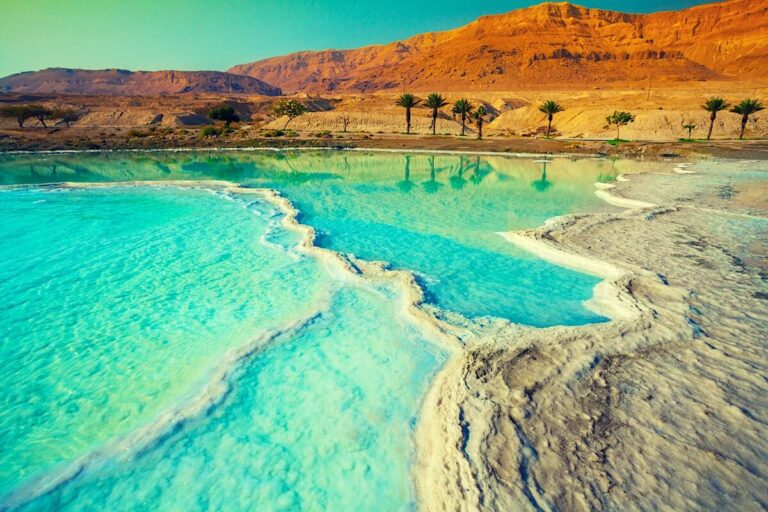
Our Top 5 Best Places to Visit in Jordan
My Journey Through Jordan’s Top 5 Destinations If you’re ready to dive into a world of ancient wonders, surreal landscapes, and incredible experiences, then Jordan is calling your name. Let me take you on a ride through my unforgettable journey as I uncovered the 5 best places to visit in this captivating country. Map of…

Our Top 5 Best Places to Visit in Lebanon
Lebanon Unveiled: Exploring the Mystique of the Middle East Welcome to the captivating land of Lebanon! Nestled along the Mediterranean Sea, this enchanting country is a treasure trove of history, culture, and natural beauty. Let’s embark on a journey to discover some of the most mesmerizing places that Lebanon has to offer. Map of Lebanon…
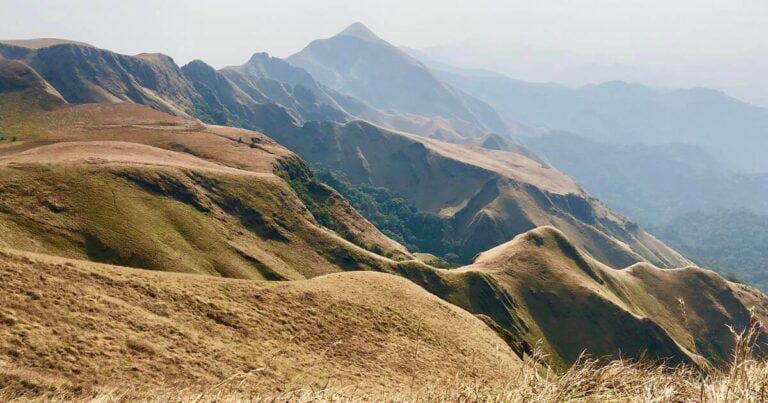
Our Top 5 Best Places to Visit in Guinea
Unveiling Guinea’s Hidden Treasures: 5 Must-Visit Places Are you ready for an off-the-beaten-path adventure in West Africa? Guinea, a hidden gem nestled between Guinea-Bissau, Senegal, Mali, Cote d’Ivoire, Liberia, and Sierra Leone, awaits your discovery. Prepare to be captivated by its vibrant culture, stunning landscapes, and welcoming people as we explore some of the must-visit…

Backpacking through India:
With its majestic mountains, stunning beaches, vibrant cities, and rich cultural heritage, India offers an unforgettable experience..
Exploring Greece’s Timeless Treasures: Greece Best Places to Visit Top 10
Exploring Italy’s Treasures: The Best Places to Visit in Italy in 2023
Our 10 Best Places to Visit in Venice: Come Explore the Enchanting Floating City
Unveiling the Enchanting Beauty: Our Best Places to Visit in Florence
Our Best Free Places to Visit in New York That are yes, Absolutely FREE!
Our Best 10 Affordable Vacation Destinations if you are on a tight budget.
Our 10 Best Budget Travel Tips: Explore the World Without Draining Your Bank Account.
These are our Top 10 Best Travel Destinations Worldwide 2023
Our Absolute Best list of 10 Less Touristy Places to Travel in Europe 2023
Australia: A Traveler’s Paradise: Best Australian Destinations 2023
Our 59 Things to Know Before Traveling to India – By David John
59 Things to Know Before Traveling to India Cover Image by js
Things to Know Before Traveling to India flickr images licensed under CC BY 2.0
Additional images: adobe, colourbox, istock, pexels, shutterstock, unsplash unless otherwise stated.
Were our ‘59 Things to Know Before Traveling to India’ info helpful to you?
Let us know your thoughts in the comments below..
And if you are looking for a specific piece of information, please do comment below..



